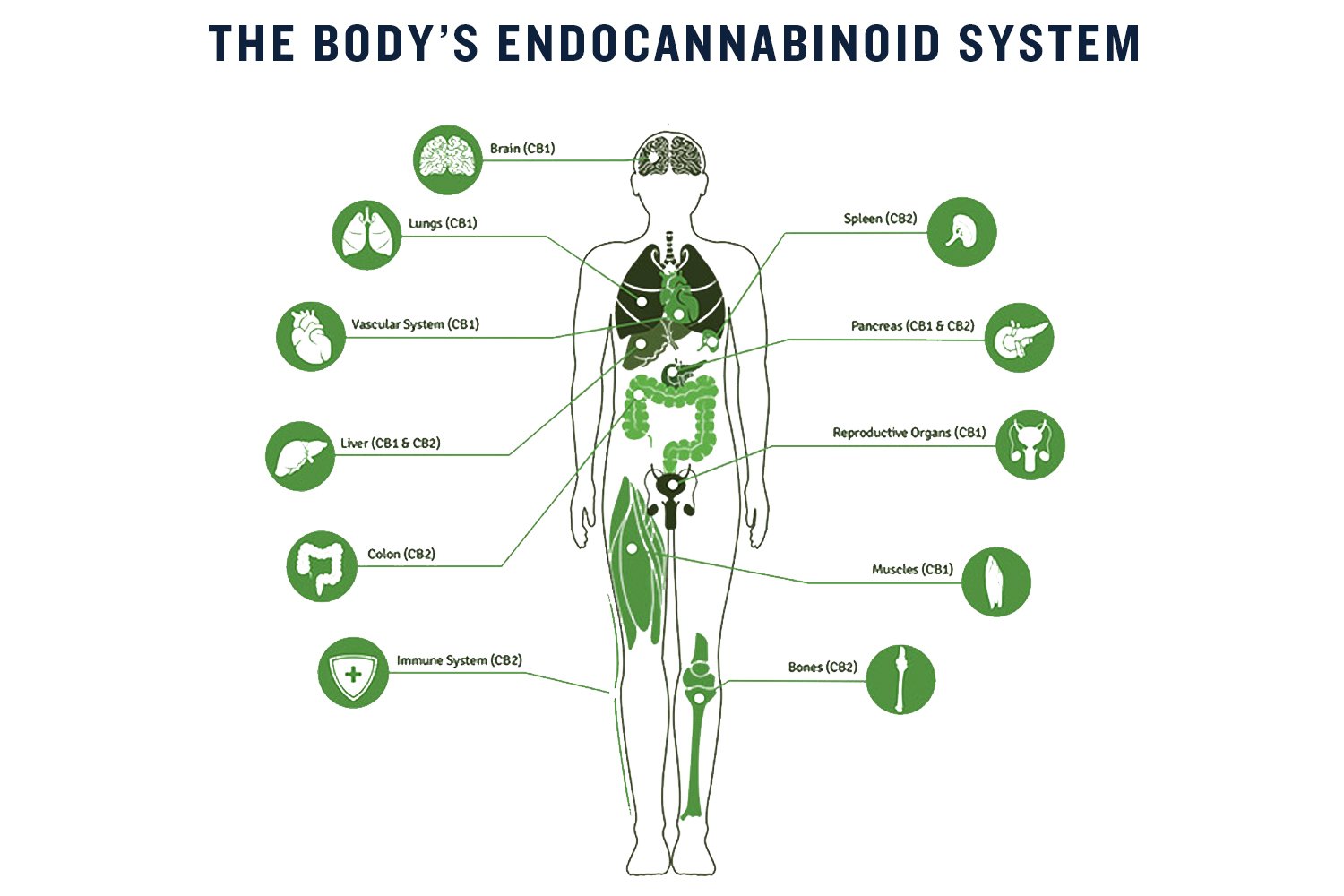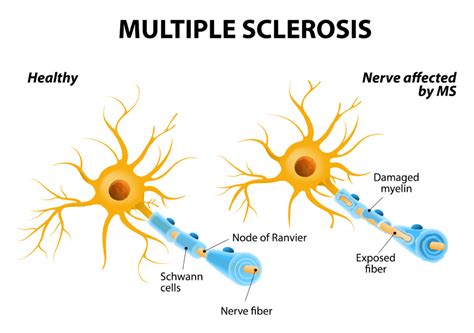Artstract #3: ECS signaling balances excitation and inhibition by decreasing neuroinflammation
When you hear the term “endocannabinoids” what’s the first thing that comes to mind? If you’re like most people, that term evokes a strong association (and subsequent emotional reaction) with cannabis, and/or marijuana. While cultural attitudes surrounding cannabis are rapidly changing in the United States, cannabis is still a hot-button issue. Interestingly, the endocannabinoid system (ECS), is so named because CB1 and CB2 receptors bind THC, the psychoactive ingredient in marijuana. However, for the purposes of this post, we will be focusing on the medicinal benefits of modulating the ECS, primarily regarding Multiple sclerosis (MS).

- Endocannabinoid System (ECS).
The ECS is a highly complex neuro-regulatory system that serves multiple functions in the brain. To understand the ECS we must know what the receptors and ligands (binding molecules) are. Two main receptors comprise the ECS, CB1, and CB2. Whereas CB1 receptors are nearly exclusively expressed in the synapse, CB2 receptors are predominantly found in immune cells, which for the nervous system are microglia. There are two primary endogenous cannabinoids (eCBs): arachidonylethanolamine (AEA) and 2-arachidonylglycerol (2-AG). These are lipid-based ligands synthesized locally from the plasma membrane. Perhaps the most interesting feature of the ECS (and maybe why the ECS is being investigated for potential therapies for myriad diseases) is that of retrograde transmission. In a nutshell, retrograde transmission means that, instead of presynaptic Neuron A talking to postsynaptic Neuron B through typical neurotransmission, Neuron B signals backward across the synapse to modulate Neuron A signaling. This process usually tamps down signaling, a kind of feedback inhibition, but is not always the case.

- Multiple Sclerosis (MS).
MS is the most common autoimmune demyelinating disease of the central nervous system and is caused when the body’s own immune system targets myelin (the protective sheath surrounding many axons which speeds transmission) and leads to neurodegeneration and pronounced disabilities. Much is known about how the disease progresses, but it is not yet known what causes the initial autoimmune attack and there is a critical unmet need for treatment options. Enter the ECS. Recent data has shown surprisingly beneficial and even neuroprotective effects in MS from increased ECS signaling, both from eCBs and exogenous cannabinoids (THC and CBD). This data is excellent news for those suffering from especially the progressive form of the disease as it holds potential to revolutionize how medicine treats MS.

- How does ECS impact MS
There are two key ways ECS signaling positively impacts MS pathology: decreasing external symptoms and inhibiting neuroinflammation.
First, data shows that simply increasing eCBs dramatically decreases spasticity (muscle spasms—a common and debilitating symptom of MS). Similar to how some anti-depressants work, the drug used to increase eCBs extends how long eCBs stay in the synapse by inhibiting their uptake and degradation by the enzyme FAAH. The benefits to motor function are primarily ascribed to CB1 receptors because activation in the MS brain can rebalance the excitation/inhibition imbalance which, when unchecked, leads to further neurodegeneration.
Secondly, EC signaling has been showing to directly decrease neuroinflammation! This works by the same mechanism, prolonging the synaptic of AEA in microglia boosts CB2 signaling, leading to lower concentrations of IL-1β and TNFα, two neuroinflammatory cytokines. This decreases microglial activation and also contributes to excitation/inhibition balancing, which is crucial for healthy neuronal functioning.
Interestingly, both CB1 and CB2 receptor signaling converge to re-balance the neuronal outputs of excitatory (glutamatergic) and inhibitory (GABAergic) neurons. This is totally in line with typical ECS functioning, which helps explain why the ECS is being probed for therapeutic potential for nearly all neurological diseases: if a master neurochemical regulator is out of whack, re-tuning it may help.
The take-home message from this sciency-blog is twofold: First, the ECS has so much more going on than just “getting people high”, it’s a critical regulator of incredible neural importance, 2) Enhancing ECS signaling has fantastic potential to improve the lives of those suffering from MS and other neurological disorders!

